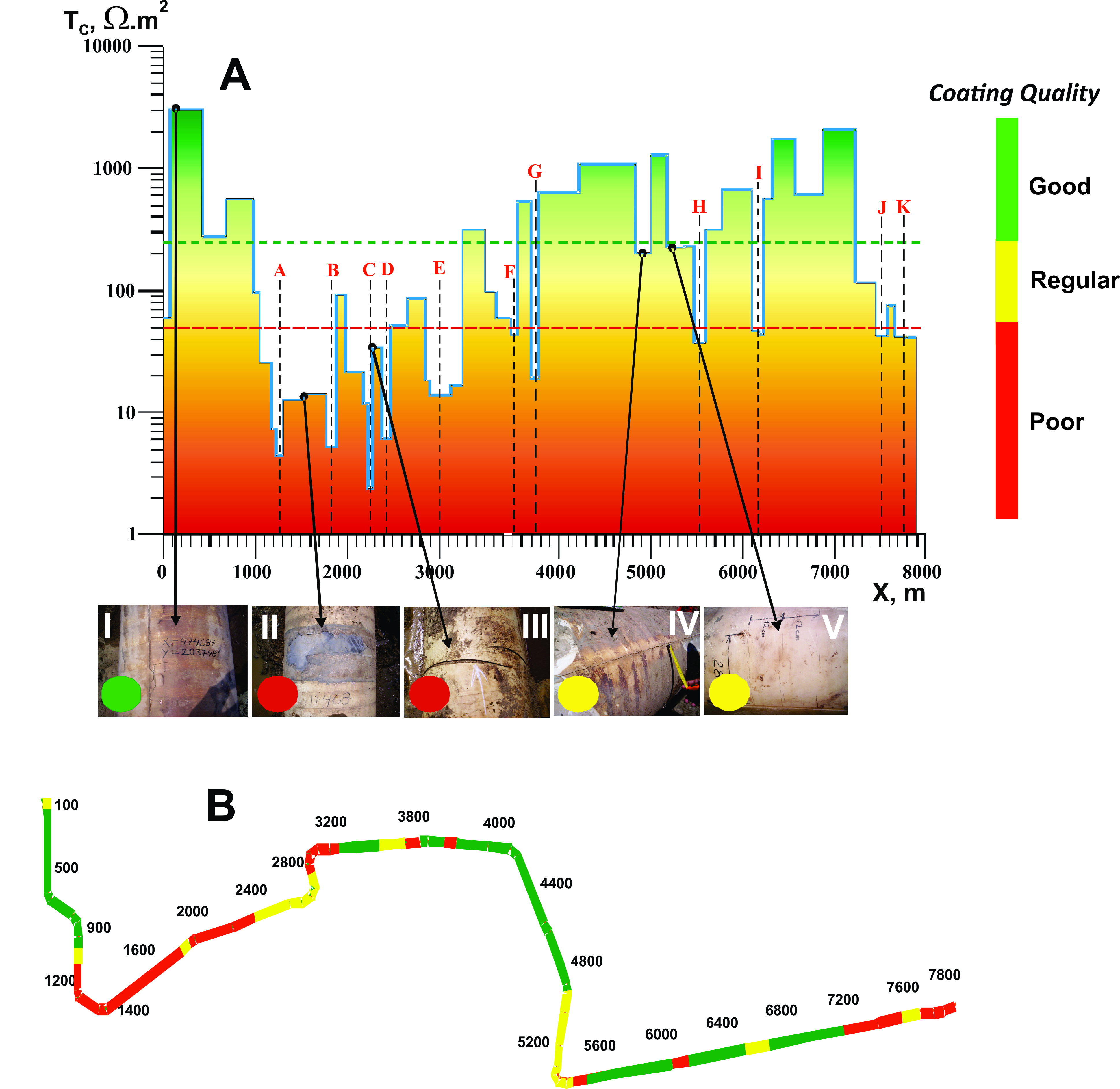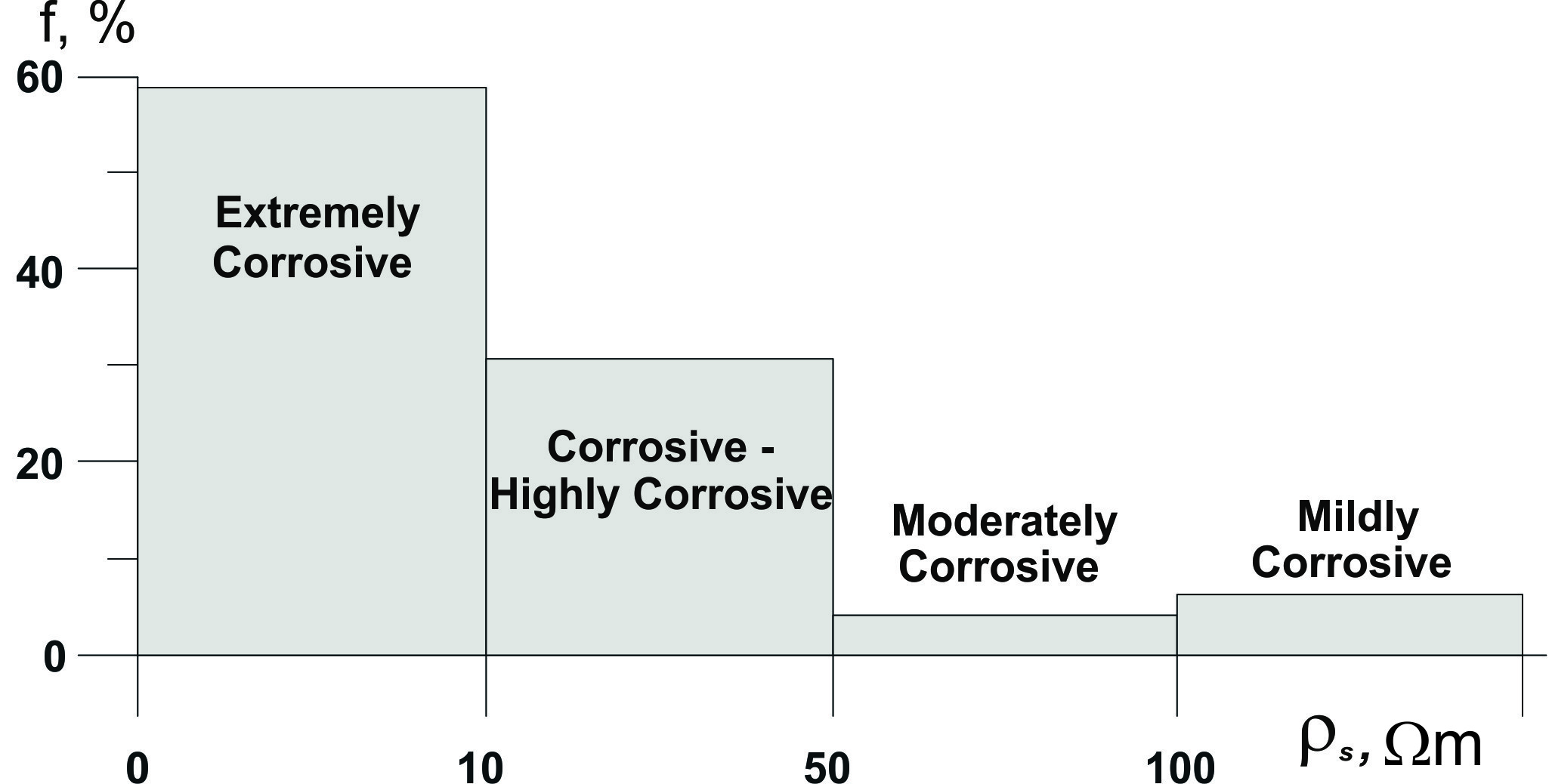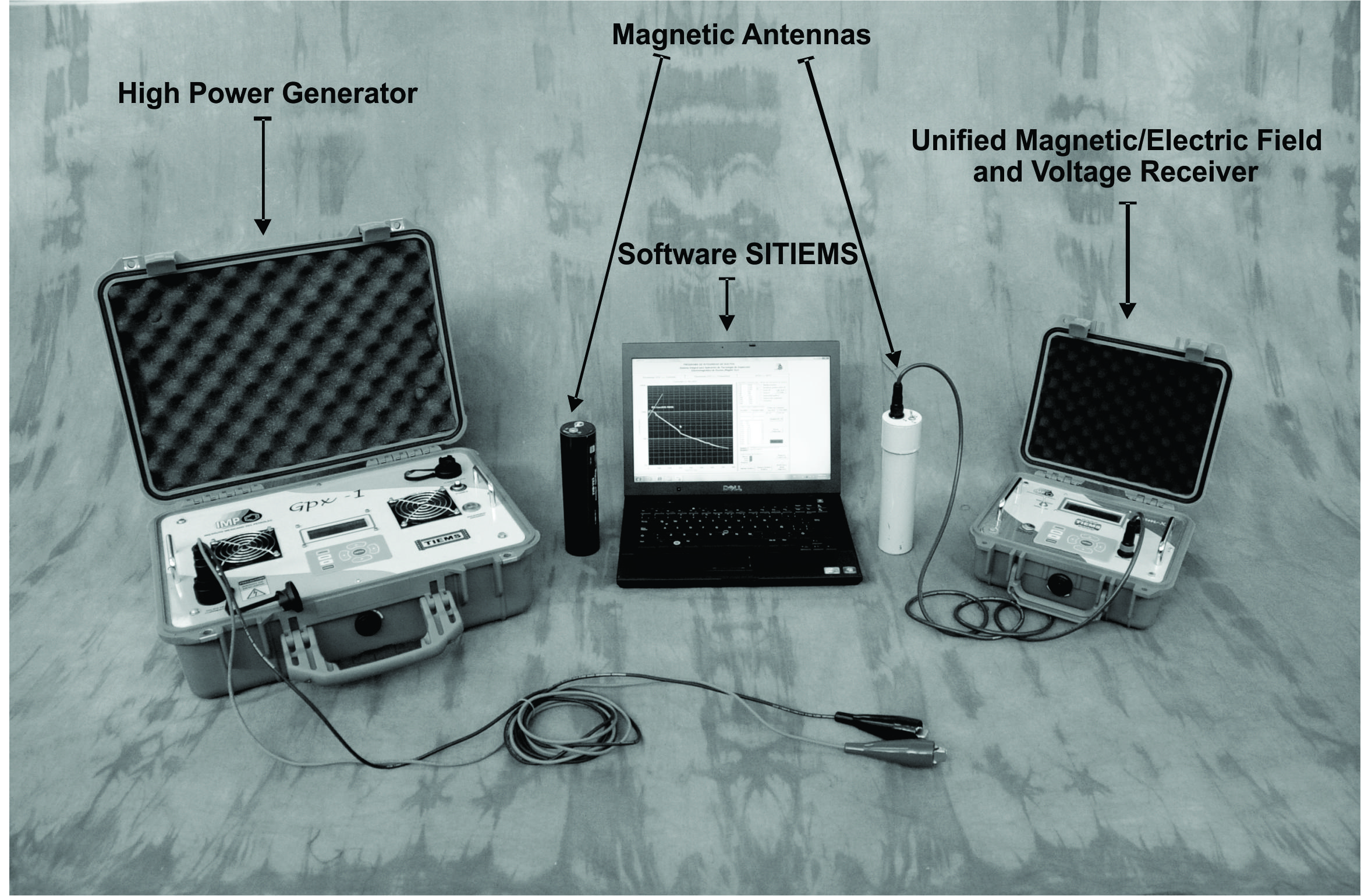April 2020, Vol. 247, No. 4
Features
Electromagnetic Measurements Used in NDT for Pipeline Coating in Mexico
By Omar Delgado-Rodríguez, IPICYT, Aleksandr Mousatov and
Edgar Kiyoshi Nakamura-Labastida, Mexican Petroleum Institute and Vladimir Shevnin, Moscow State University
Corrosion is the chemical process through which metal tries to return to its original or mineral state. In the case of buried pipelines, the metal is exposed to corrosive processes that may eventually cause ruptures with the consequent environmental and economic damages.
The pipe coating is the main barrier against external corrosion, and it provides an excellent protection. However, over time, the coating is deteriorated due to water absorption, tension and aggression caused by the soil, bacterial action and other factors.
Once coating is damaged, the metal surface is exposed to the medium electrolyte (soil or water), metal loses mass and, if this condition remains for some time, corrosion occurs, which may result hydrocarbon leakage. Therefore, external and internal inspections of pipelines are needed to assess integrity and determine if any variations during the process of exploitation has occurred.
The quality of the insulator coating determines the optimal strategy of the pipeline maintenance and the appropriated performance of the cathodic protection (CP) system. Generally, to estimate the coating quality, electrical and electromagnetic (EM) non-destructive test (NDT) methods are applied on surface.
To detect coating damage, direct current of voltage gradient and pipeline current mapper methods are widely applied. These methods are based on measuring electric potential and electrical currents along a pipe and the leakage current from a pipe to earth through the defects or damage in the coating.
However, these methods provide only qualitative information about location of current leakage, and the results can be strongly affected by changes in soil resistivity and by neighbor pipelines when the distance between pipes is comparable with (or less than) the depth.
The main threat in pipeline systems in Mexico is the extremely corrosive soil characterized by a high clay content and low resistivity. Pipelines interconnections including pipes out of service and the short distance between parallel pipelines compared to their depths, reduces the possibilities for effective electrical or EM inspection based on surface measurements. Because of this, it is necessary to have inspection techniques that can determine coating electrical resistance as a quantitative parameter of the coating quality.
The Mexican Petroleum Institute (MPI) developed the Surface Electromagnetic Pipeline Inspection (SEMPI) technology for quantitative assessment of the coating quality from parameters such as leakage current, leakage resistance and coating resistance.
The technology is based on the transmission line (TL) theory, which allows one to emulate the changes of the coating quality as a sequence of different homogenous transmission line sections and calculate EM parameters for different conditions of the pipeline coating and soil.
SEMPI´s Instrumentation
The SEMPI data interpretation software (DISEMPI) instrumentation includes a high-power generator, a unified receiver for measurements of the magnetic-field, electric-field and voltage, and induction antennas for use as magnetic field sensors (Figure 1). In addition, SEMPI includes software for processing and interpretation of experimental data.
The equipment is robust and able to work in different geographical and weather conditions. The high-power generator and high-resolution receiver allow an operator to record reliable field data in the pipeline route, where there are complex conditions (nearby pipelines and resistive sub-soil).
The main calculated parameters in the regional stages are electrical resistance of the coating (Tc) as a measure of coating quality and soil resistivity as a measure of the soil aggressiveness.

Practical Results
The equipment showed successful results in the inspection of a 24-inch outside diameter oil pipeline buried in problematic soil. The inspected pipe length is 5 miles (8 km), and it passes through swampy zones near the Gulf of Mexico.
The Tc graph of the inspected pipeline (Figure 2), where the anomalous pipe sections, with Tc < 50 Ωm, are identified using letters A to K. It is notable that the interval between 1,000 meters and 3,300 meters presents the lowest values of Tc.
Finally, in (Figure 2B), the path of 24-inch outer diameter oil pipeline is presented using the colors scale to indicate the coating condition, according to the Tc value. Figures 2 shows the pipeline section with more damages in the coating is in the interval of 1,000 to 3,300 meters. Based on the results, some representative points of the condition of pipeline coating (green, yellow and red zones) were selected for carry out excavations in order to verify the magnitude of the coating damage.
As indicated in Figure 2A, the excavation made in green zone shows the coating in good condition: two excavations in red show severe coating damages, while two excavations made in yellow zone show damages as fractures. Subsequent excavations in red zones showed coating discontinuities (holidays) and disbondment (Figure 2A) in the welding zone between pipeline sections of 12 meters in length. This result confirms SEMPI is able not only to locate but also quantify the coating damages.
Soil Corrosivity
Some soil parameters are taken into account to assess its corrosiveness, mainly electrical resistivity and pH. Electrical resistivity depends largely on soil moisture and salinity of pore-water, so it is an effective indicator of soil corrosion level. Lower soil resistivity values are related with high corrosivity. The opposite is also true, being commonly used to assess corrosion potential in underground pipeline.
A soil resistivity profile parallel (a separate 8 meters) to the pipeline route was obtained using EM induction equipment, EM31-MK2, for a maximum study depth of 3 meters. The lower-resistivity values (< 10 Ωm) focus on the pipeline intervals 500 to 3,200 meters and 5,600 to 7,800 meters.
The histogram of the Figure 3 shows the statistical distribution of soil resistivity values for 24-inch outer diameter oil pipeline, where 59% of the pipeline is buried in extremely corrosive soil, and about 30% of pipeline is buried in highly corrosive soil (Figure 3). In other words, 89% of the pipeline is at risk due to the high soil corrosivity.

Conclusions
SEMPI technology was developed on the basis of transmission line (LT) theory, which allows for the modeling of different types of pipe coating damages, as well as different types of soil surrounding pipeline.
The main result of SEMPI is the determination of the coating resistance (Tc) values along a pipeline, which indicate the quality of the pipe coating. Successful results from the application of SEMPI technology in pipelines locate in the southeast part of Mexico, shows the effectiveness of the technology to determine the coating integrity of pipelines buried in very corrosive soil.
Authors: Omar Delgado-Rodríguez is a geophysicist has 35 years working on near-surface geophysics, with expertise in the application of surface geoelectrical methods for solving environmental problems and in the surface electromagnetic coating inspection of buried pipelines. Currently, he works at IPICyT, San Luis Potosí, Mexico.
Aleksandr Mousatov is a geophysicist with 40 years working in geophysical exploration. He has worked on the development of electromagnetic methods, systems and measurement techniques. He was manager of Quantitative Geophysics at the Mexican Petroleum Institute.
Edgar Kiyoshi Nakamura-Labastida is an electronics expert with 22 years in the oil industry. He has worked on the development of surface and well electromagnetic methodsand evaluation tools for pipelines integrity. He is manager of Tools and Systems for Wells and Facilities at the Mexican Petroleum Institute
Vladimir Shevnin is a geophysicist with 45 years of experience on near-surface geophysics, with expertise in the application of surface geoelectrical methods related to surface electromagnetic coating inspection of buried pipelines. He works at Moscow State University, Moscow, Russia.






Comments